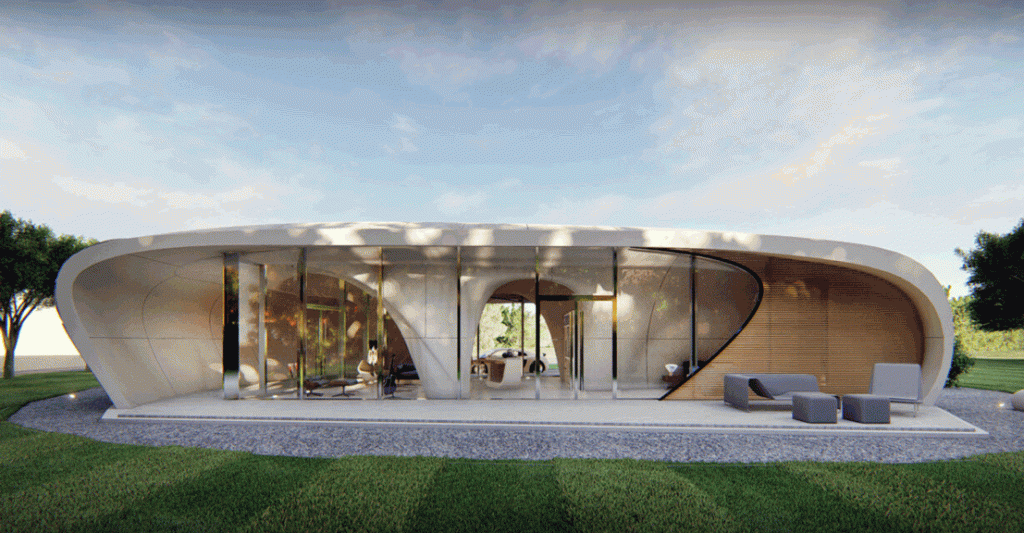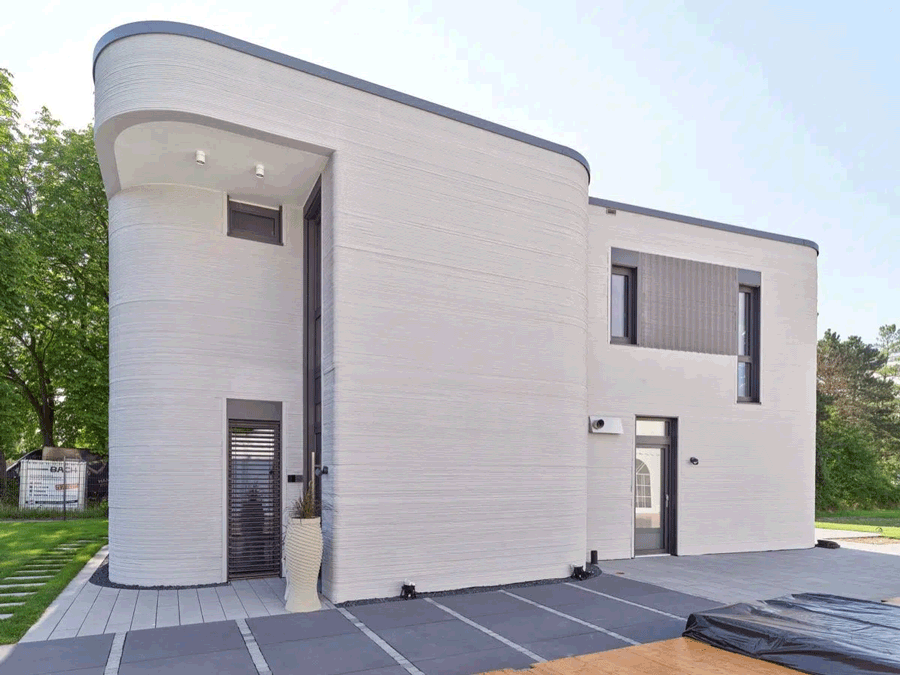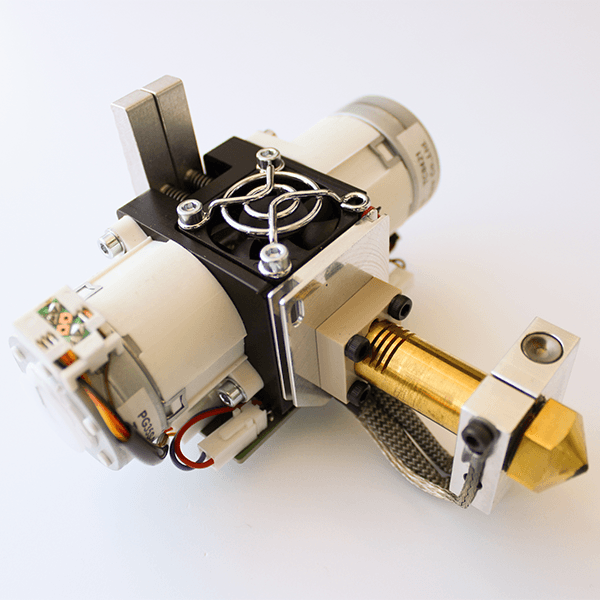Skip to comments.
Homes "unaffordable" in 99% of nation for average American
cbs via msn ^
| 10/1/2023
| Khristopher J. Brooks
Posted on 10/01/2023 11:10:08 AM PDT by RomanSoldier19
he typical American cannot afford to buy a home in a growing number of communities across the nation, according to common lending standards.
That's the main takeaway from a new report from real estate data provider ATTOM. Researchers examined the median home prices last year for roughly 575 U.S. counties and found that home prices in 99% of those areas are beyond the reach of the average income earner, who makes $71,214 a year, according to ATTOM.
(Excerpt) Read more at msn.com ...
TOPICS: Business/Economy; Culture/Society; Front Page News; Government; News/Current Events; Politics/Elections
KEYWORDS: 3dprintedhome; bidenflation; bidenlegacy; economy; homedesign; homeownership; housing; medianhomeprices; realty; war
Navigation: use the links below to view more comments.
first previous 1-20, 21-40, 41-60, 61-77 last
To: ridesthemiles
Interest was 5.25% when I bought my first house.
——-
Alittle more experienced here, 13 percent mortgages were the norm in my early days, Money markets were paying 20 percent….I would say Americans will adapt, but we never experienced such a corrupted government, and a dwindling of believers.
61
posted on
10/01/2023 3:36:23 PM PDT
by
delta7
To: frogjerk
During covid there was a ridiculous 20-40 markup.
To: Right Brother
Median HOUSEHOLD income is only about 64, so ya, a whole lot lower.
63
posted on
10/01/2023 4:37:49 PM PDT
by
gnarledmaw
(Hive minded liberals worship leaders, sovereign conservatives elect servants.)
To: Bishop_Malachi
Compare the amount of money we spend on Ukraine to the aid we send to other countries (why won’t you name those other countries?) and that foreign aid amounts to only 1% of the federal budget - aid to kill Russian scum is barely a drop in the bucket relative to all the other crap we spend money on in this country, no matter where you fall on the Ukraine war.
64
posted on
10/01/2023 4:59:25 PM PDT
by
Clemenza
To: RomanSoldier19
Now and then, you may encounter someone who says of his recent dental work, “It was wonderful, I didn’t feel a thing, I just LOVE my dentist!”
Who ever said that about getting a mortgage? And the pain only gets worse after you get it!
I make a good living in residential real estate. I’ve never had to go to a bank. Buy FSBO, buy at sheriff’s sale, estate sale, or auction. Clean them, tart them up a little, sell with owner fi. If a prospective buyer wants to bring a bank into the process, I back away.
A young couple with virtually no savings can find a home they can afford, if they don’t set criteria that eliminate every possible home.
People who think they can’t afford a house are actually prioritizing something above house they say they want. For example, location. It HAS to be near their work or their preferred school district or their relatives — and then they can’t afford it because it’s a half million dollars. Same basic house elsewhere is $150k, but no, they need to see the skyline or the ocean...
Not long ago I advertised a house, looking for $80k. One prospect said it must be in a ghetto. He was in Philly. I said, “The closest ghetto is about an hour from the house, or about five minutes from where you are.”
And then there’s the ones who turn up their noses at fixer-uppers. Hello! They’re ALL fixer-uppers. Ask any wife.
But I’m not a coach. If they want an affordable house, they need to do their own research, and sometimes think outside the box, and for heaven’s sake, outside the bleeping bank.
65
posted on
10/01/2023 6:21:10 PM PDT
by
Buttons12
( )
To: Carriage Hill
No link, just LOOK at it being oozed-out... No steel support or reinforcement. My guess from painful experience is that you are an employee of a local building department.
Steel cables and steel meshes provide very effective reinforcement in “printed” concrete structures. They are either laid down in between layers or extruded simultaneously with the concrete depending on the type of machinery being used. Do you think that the engineers and others who are working on this new method of construction believe that they are not going to be required to demonstrate that the structures formed are not both strong and safe?
Is this a method that will be able to be used or useful for every project? Obviously not! But is it something that should be rejected based on some sort of ignorant preconceived notions?
It is people like you who are a big problem when it comes to creating affordable safe housing in the United States. You make assumptions and will not make any effort at all before spouting out nonsense.
66
posted on
10/02/2023 8:15:22 AM PDT
by
fireman15
(Irritating people are the grit from which we fashion our pearl. I provide the grit. You'e Welcome.)
To: moovova
And a house such as this world be fine for me...as a large one-story home. I'm also perfectly fine with the industrial looking exterior. I do not have any immediate plans to build another house or use this technology for any construction project. But I can appreciate the effort and money that others are putting into this new technology. Since childhood I have always thought that cement and its derivatives used in concrete, mortar, masonry mixes, stucco and now 3D giant printers is just amazing. I also have been using 3D printers for years now and have designed and printed out many useful items, such as the venturi assembly that I used to convert my gasoline engine to natural gas and propane.
Here are a couple of interesting looking houses that were partially “3-D printed out of concrete”.



My father and his family had a large construction business in the 1940s through the 1960s. My dad still has a wonderful set of extremely nice concrete forms that we used for building foundations. And I personally have covered concrete blocks and concrete structures with stucco by hand to make them more attractive while adding a bit of extra protection. I find the finish of 3-D printed structures to have a somewhat similar appearance to what I get when I sweep across the partially dried stucco with a wet sponge float tool.

67
posted on
10/02/2023 8:47:40 AM PDT
by
fireman15
(Irritating people are the grit from which we fashion our pearl. I provide the grit. You're Welcome.)
To: fireman15
“My guess from painful experience is that you are an employee of a local building department.”
Not quite; I’m a retired Horticulturalist/Botanist of 53yrs experience. I’m a big supporter of innovative housing techniques, but this looks it is fraught with future problems.
Please, prove me wrong.
I’ve rerun the video several times, and can’t see any structural support for the multi-layer concrete extrusion. If there is support, I’ll be surprised and support that process wholeheartedly. As is, I can see none and would think that even a mild earthquake in the 4-5 range, or 65-80mph wind might cause the structure some deadly problems.
68
posted on
10/02/2023 8:48:17 AM PDT
by
Carriage Hill
(A society grows great when old men plant trees, in whose shade they know they will never sit.)
To: fireman15
I seriously LIKE that modern design, but what about stability and durability field trials? Are they safe in adverse conditions?
69
posted on
10/02/2023 8:50:47 AM PDT
by
Carriage Hill
(A society grows great when old men plant trees, in whose shade they know they will never sit.)
To: Romulus
“Homes are affordable, or they wouldn’t be selling at the prices they command. “
You confuse ability to purchase with affordability.
70
posted on
10/02/2023 9:02:30 AM PDT
by
CodeToad
(Arm Up! They Have!)
To: RomanSoldier19
71
posted on
10/02/2023 9:32:03 AM PDT
by
Eleutheria5
(Every Goliath has his David. Child in need of a CGM system. https://gofund.me/6452dbf1. )
To: Carriage Hill
I am sorry that I misjudged you. I have years of experience using a small 3D printers and designing mostly useful items that I print out. which does give me some slight advantage in understanding how this type of structure is reinforced in a way that might not be visible in the video.
3-D printed objects that come from printers using extruders can be very strong depending on the filament being used.

Extruder
When I am out an object that needs extra strength, I use a hybrid filament that uses both a very strong plastic base material and is reinforced with steel or some other type of very strong fibers. But I should mention that this type of 3-D printed object like wood is much weaker when you use something to split them with the grain in the same way that wood is. So, the objects must be designed to compensate for this.
The engineers designing structures using concrete 3-D printers must design the structures to be strong and safe. They are designed with the limitations of the materials in mind. Some have steel or other fibers added to the mix which forms a mesh. Some have steel cables embedded between layers of concrete.
It is similar to the first airplane that I purchased decades ago which was a homebuilt ultralight project which was made out of mostly Styrofoam, wood and fabric. The Styrofoam was very strong in compression as concrete is and the wood was very strong in tension. It airplane was designed by an aeronautical engineer and was designed for loads of 6"G's" positive and 3"G's" negative.
This was much stronger that your typical lawn chair with wings... weedhopper that was the most common ultralight aircraft of the time and was comparable to the double surface state of the art competition hang glider that I had been using at the time. It was also actually stronger than your typical General Aviation aircraft. A Cessna 172 certified in the utility category can handle 4.4 G's positive or -1.76 G's negative.
Yet, everywhere I flew it people would give me a bad time about it mostly being made out of Styrofoam. Even 40 years later there are still no known fatalities in this design despite the fact that the vast majority of pilots have no pilot certification at all.
Things are not always what they seem.
72
posted on
10/02/2023 9:32:03 AM PDT
by
fireman15
(Irritating people are the grit from which we fashion our pearl. I provide the grit. You're Welcome.)
To: RomanSoldier19
Rich people around the world want a home in the US, that is what is driving the prices up, so as to be unaffordable for the average American.
73
posted on
10/02/2023 9:33:27 AM PDT
by
dfwgator
(Endut! Hoch Hech!)
To: Carriage Hill
74
posted on
10/02/2023 9:35:39 AM PDT
by
fireman15
(Irritating people are the grit from which we fashion our pearl. I provide the grit. You're Welcome.)
To: fireman15
No problem.
I never thought about plastic filaments. I’m used to steel; rebar, beams, rods etc.
I’d buy one of those modern homes in a heartbeat, and would get on the “printed house” bandwagon to others, bigtime, IF they’re safe and have passed bad weather field trials wo/ adverse effects.
75
posted on
10/02/2023 11:27:47 AM PDT
by
Carriage Hill
(A society grows great when old men plant trees, in whose shade they know they will never sit.)
To: Carriage Hill
I am sorry again, I wrote my last post in a confusing way. Some of the plastic filaments I have used in my desktop sized 3-D printer have been reinforced... typically with steel or some type of carbon fiber.
I have no plans to purchase or build a "printed" concrete house. But I do believe that they can be engineered to high standards that would outperform most traditional structures in challenging conditions... such as extreme weather.


76
posted on
10/02/2023 5:13:47 PM PDT
by
fireman15
(Irritating people are the grit from which we fashion our pearl. I provide the grit. You're Welcome.)
To: fireman15
Carbon fiber and stainless steel.
Now, it makes some sense about the stability and durability. Thanks.
77
posted on
10/02/2023 6:57:50 PM PDT
by
Carriage Hill
(A society grows great when old men plant trees, in whose shade they know they will never sit.)
Navigation: use the links below to view more comments.
first previous 1-20, 21-40, 41-60, 61-77 last
Disclaimer:
Opinions posted on Free Republic are those of the individual
posters and do not necessarily represent the opinion of Free Republic or its
management. All materials posted herein are protected by copyright law and the
exemption for fair use of copyrighted works.
FreeRepublic.com is powered by software copyright 2000-2008 John Robinson






